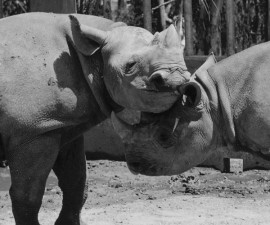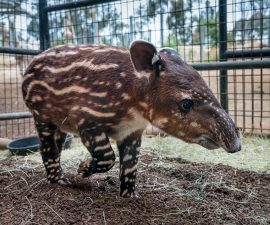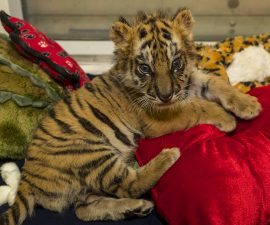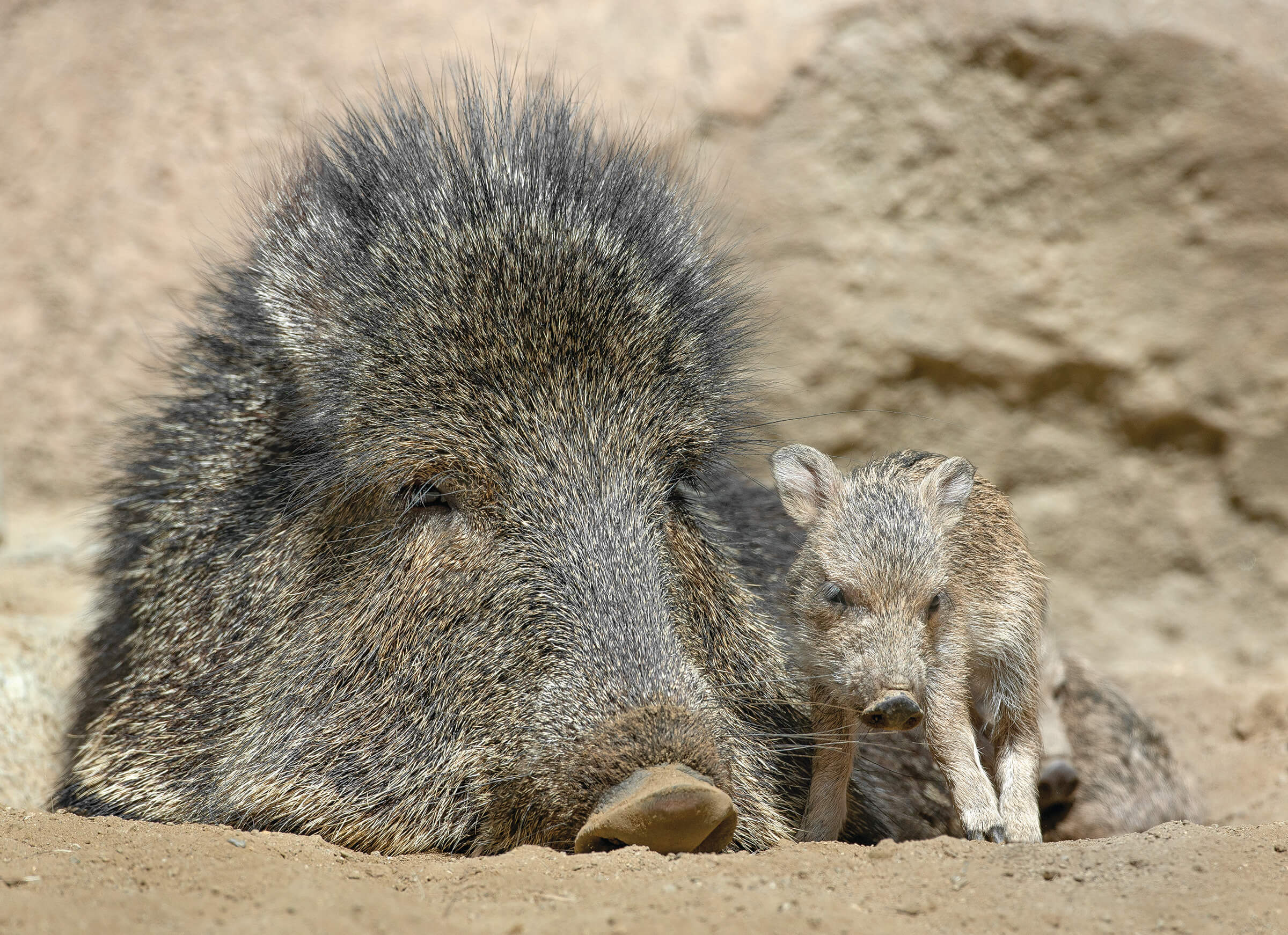
Who Are You Calling a Pig?
It looks like a pig, acts like a pig, and eats like a pig, but is it a pig? Maybe not.
Swine (pigs) aren’t the only small-hoofed mammals with nostrils at the flat end of a long, mobile snout. Meet the peccaries!
BY Donna Parham
Photography by Ken Bohn
It’s easy to see how someone might mistake a peccary for a pig. Both are ungulates (hoofed mammals), with an even number of toes (four) on each dainty foot. That makes them members of the Order Artiodactyla, along with camels, giraffes, hippos, deer, cattle, and antelope. But it doesn’t take a taxonomist to see that they have a body shape—and lifestyle—that sets them apart. Barrel-bodied and slender-legged, pigs and peccaries have a large head on a short, thick neck, and—more obvious than anything else—a characteristic snout that ends in a flat, cartilaginous disk. Those are some of the traits that put them in their own suborder, called the Suina.
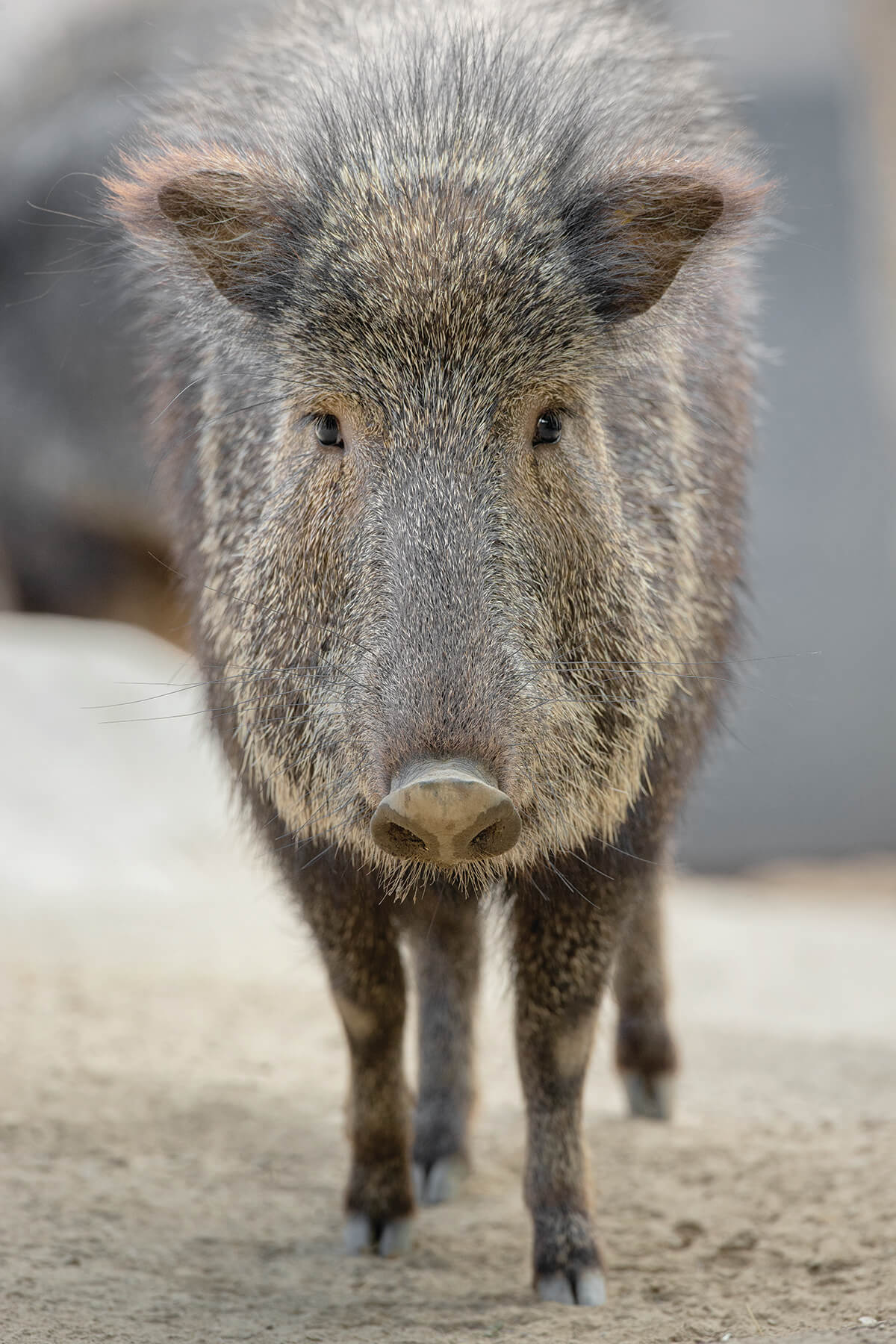
PROUDLY PECCARY
Peccaries and pigs have features in common, but only peccaries are native to the Americas.
Unlike many of their artiodactyl relatives, the Suina bear neither antlers nor horns. And while their relatives are herbivores, pigs and peccaries are omnivores. Their eyes are rather small, and their vision isn’t great, but their excellent sense of smell and muscular snout are adaptations for rooting for food buried in soil. Both pigs and peccaries can swim, and they are famously fond of wallowing in mud.
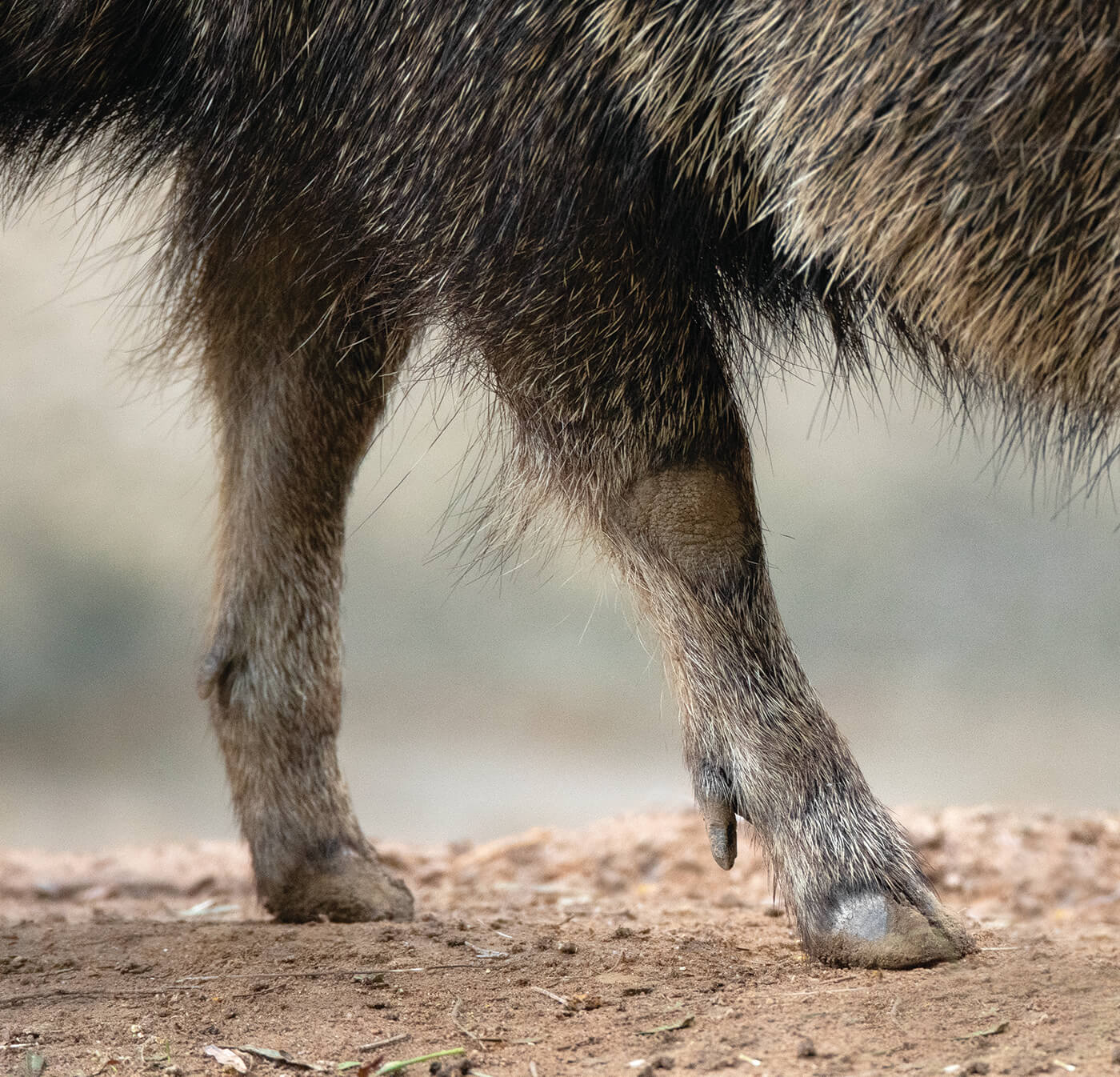
TIPPY-TOES
Peccaries have four toes, but they support their weight only on the two center digits. The outer digits are small and vestigial dewclaws, higher on the leg
But the Suina is divided into two very different families: the Suidae (pigs, or swine) and the Tayassuidae (peccaries). They share a common ancestor, which likely originated in Asia, and early pigs and peccaries spread throughout Asia, Europe, and Africa. While swine remained established in the Old World, some of the early peccaries made their way to North America, and eventually, South America. In fact, peccary fossils show up on every continent except Antarctica and Australia. Though peccaries ultimately died out in the Old World, they flourished in the New World.
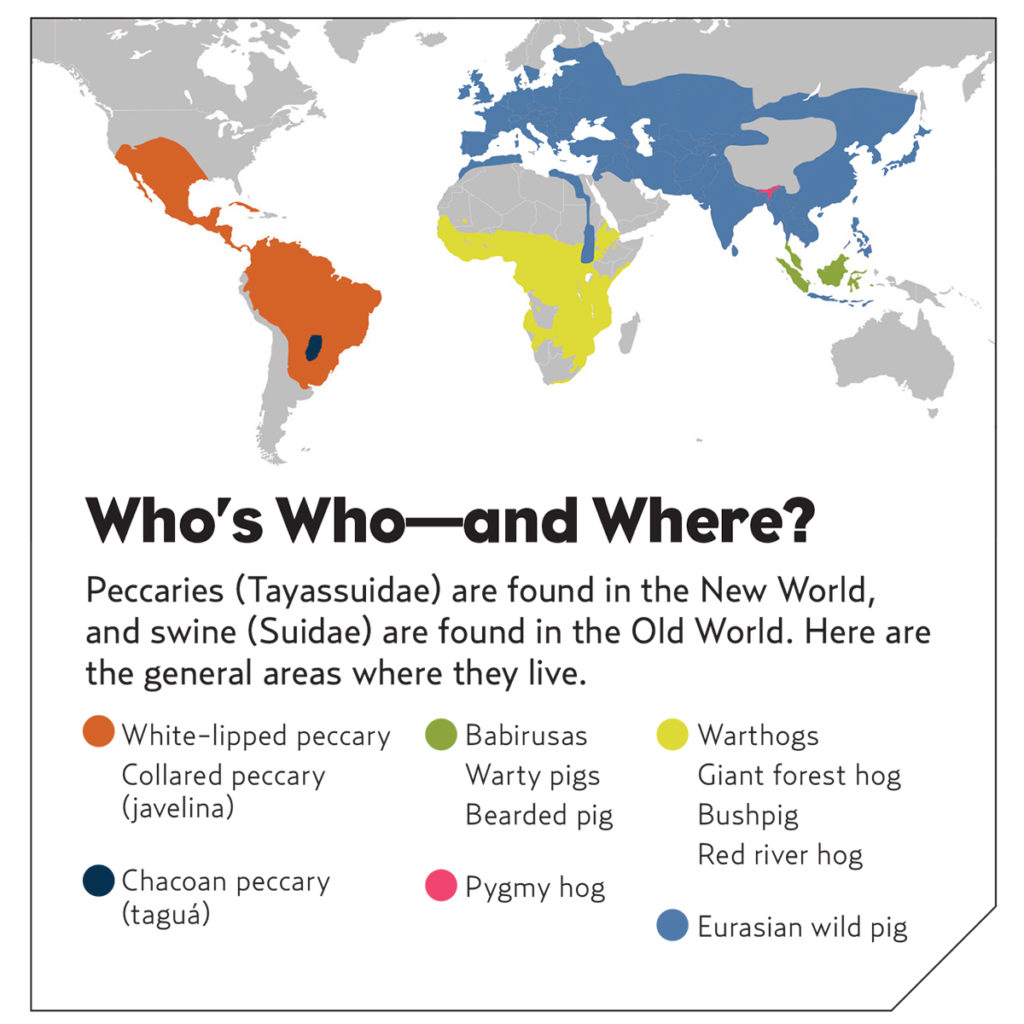
Today, the Americas are home to three species of peccaries that evolved from these early immigrants. The collared peccary Pecari tajacu is perhaps better known as the javelina, a name that comes from the Spanish word jabali, for “wild pig”—early settlers didn’t have the grasp of taxonomy that we do today. The only peccary native to the US, its range extends from Arizona, New Mexico, and Texas to the Amazon Basin and northern Argentina.
The white-lipped peccary Tayassu pecari, listed as Vulnerable by the International Union for Conservation of Nature (IUCN), inhabits much of central South America, where its range overlaps with that of the collared peccary. Habitat loss and hunting have taken a toll though, and white-lipped peccaries are extinct in large parts of their former range.
In South America’s dry Chaco region, which includes parts of Paraguay, Bolivia, and Argentina, collared and white-lipped peccaries overlap with a third species, the rare and Endangered Chacoan peccary Catagonus wagneri, known locally as the taguá. Illegal and uncontrolled hunting for their meat, along with the spread of agriculture and pasture for livestock, threaten the survival of this species.
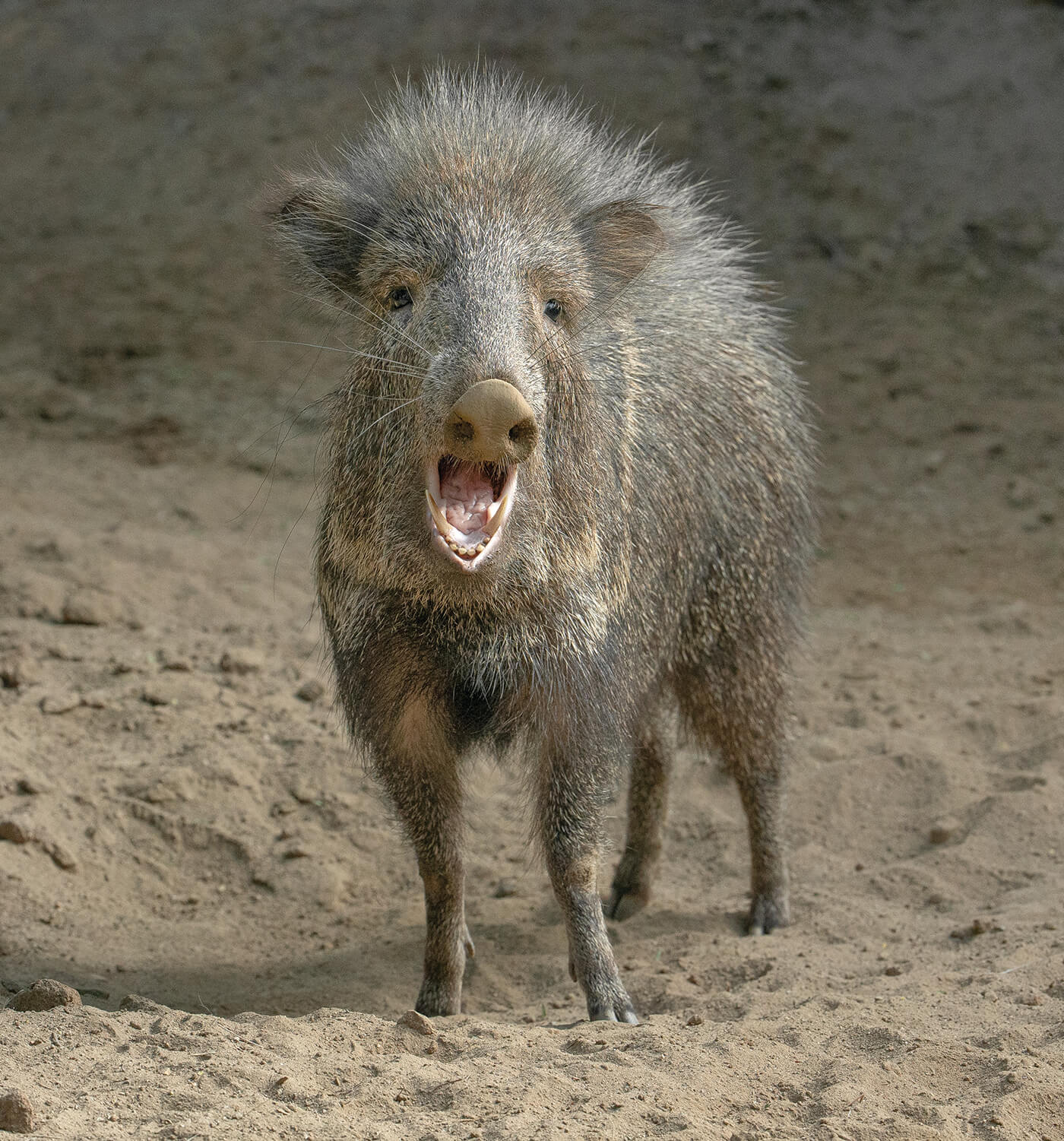
WHAT LARGE—AND STRAIGHT—TEETH YOU HAVE
Vertically oriented canine teeth add stability and strength to a peccary’s bite, helping them crack seeds as hard as palm nuts.
Peccaries differ from pigs in more than just geography. Perhaps the most reliable way to tell a peccary from a pig is to take a look at its mouth—the number and arrangement of teeth is different. Most noticeably, a pig’s canine teeth grow out and backward into large, curved tusks, obvious even when its mouth is closed. In contrast, a peccary’s proportionately smaller, straighter tusks aren’t so obvious. They grow in a more vertical orientation: upper canines grow downward, and lower canines grow upward. A peccary’s upper and lower tusks interlock, which stabilizes their jaws and strengthens their biting force. It also constrains their chewing motion to an up-and-down movement of the lower jaw, unlike the circular chewing motion of other artiodactyls. This adaptation makes peccaries some of the few animals that can crack open seeds as hard as palm nuts.
Both pigs and peccaries are omnivores that eat vegetation including roots, bulbs, tubers, fruits, and seeds—as well as fungi, worms, grubs, small vertebrates, eggs, and carrion. But, peccaries generally eat more plant material than pigs do. A peccary’s complex, three-chambered stomach is home to symbiotic microflora that digest the cellulose in plant walls. (A Chacoan peccary can subsist on cactus.) Pigs, in contrast, have a somewhat less efficient system, in their hindgut, for digesting plant matter.
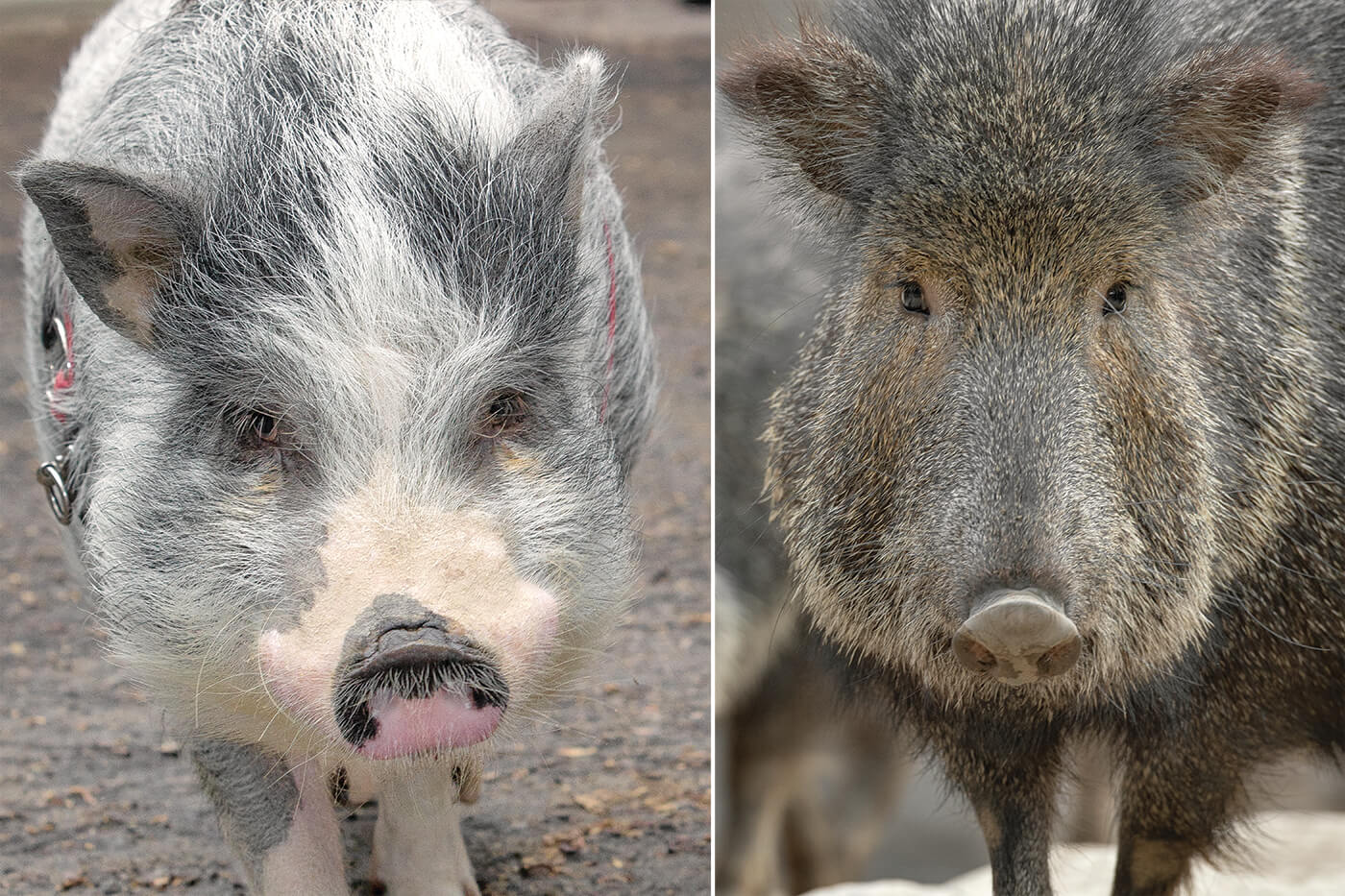
PIG OR PECCARY?
A peccary’s ears (at right) are reminiscent of a fuzzy teddy bear, while most pigs (at left) have large, upright, rather pointed ears.
You can find other differences between pigs and peccaries at both ends of the animals. A peccary’s ears are reminiscent of a fuzzy teddy bear, while most pigs have large, upright, rather pointed ears. At the other end, a peccary’s tail is small and inconspicuous, while a wild pig’s longer tail is adorned with a tassel at the tip. (Only domestic pigs have curly tails.)
Both peccaries and pigs are remarkably smart. Experts compare their intelligence to a dog’s or a dolphin’s. They are also social, tactile, and gregarious, and one way they communicate is by scent marking. There’s a difference here, too. Only peccaries have a dorsal scent gland on their back, near their rump. A typical peccary behavior is for two individuals to stand head to tail and rub against their companion’s dorsal scent gland, which—even for peccaries (and pigs)—is particularly pungent.
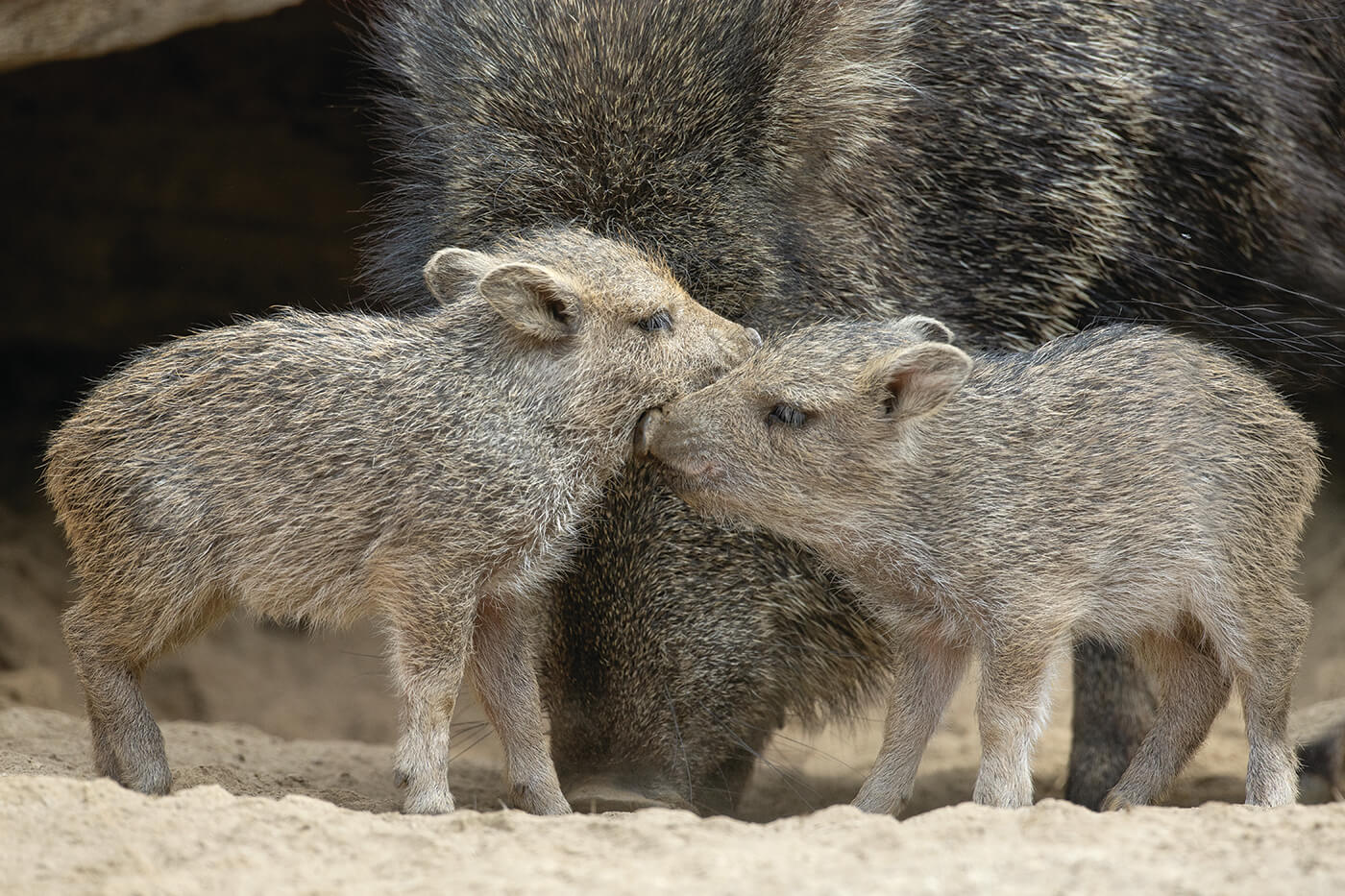
THE “UN-PIGLETS”
San Diego Zoo Global works with zoos across North America and Europe to increase the population of Chacoan peccaries.
San Diego Zoo Global (SDZG) has a long history of Chacoan peccary conservation, first stepping in to help in 1985 by providing stewardship for Proyecto Taguá, a program that established a managed-care population of Chacoan peccaries in Paraguay to learn more about them and to establish an assurance population. In 2010, the Proyecto grew into El Centro Chaqueño para la Conservación e Investigación (Center for Conservation and Research), continuing and expanding its conservation mission.

MEET OUR PECCARIES AND PIGS
(From left to right): Chacoan peccary (Zoo); North Sulawesi babirusa (Zoo and Park); domestic pig animal ambassador (Zoo); southern warthog (Park); red river hog (Zoo and Park).
SDZG also participates in the Association of Zoos and Aquariums (AZA) Chacoan Peccary Species Survival Plan (SSP) program. The European Association of Zoos and Aquaria (EAZA) manages a similar program. “San Diego Zoo has worked actively with zoos in Palm Desert, Los Angeles, Fresno, Phoenix, Eureka, Wichita, Norristown, St. Louis, Knoxville, Manhattan, and Berlin to support and improve the sustainability of this species,” says Carmi Penny, director of Collections Husbandry Science at the Zoo. “In total, 20 zoos in North America and 7 zoos in Europe are working to provide an insurance population of Chacoan peccaries in managed care.” In fact, many of the Chacoan peccaries in residence at the Zoo were born right here. Stop by Northern Frontier, across from the polar bear habitat, to see them. When you do, just don’t call them pigs.

